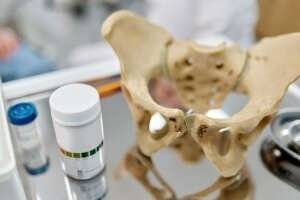The Importance of Calcium in Chronic Pain Management
Chronic pain in areas like the neck, back, knees, and ankles often stems from weakened musculoskeletal structures. Nutrition, particularly calcium intake, plays a pivotal role in addressing such issues, supporting both bone strength and pain relief.

How Calcium Enhances Bone Health and Alleviates Pain
Supporting Bone Density to Prevent Pain
Weakened or brittle bones are a common cause of pain in weight-bearing joints like the back, knees, and ankles. Adequate calcium intake enhances bone density, reducing the risk of fractures and conditions such as osteoporosis.
Pro Tip: Pair calcium with vitamin D to optimize absorption and bone health.
Aiding Muscle Function
Calcium also regulates muscle contractions and relaxation. Insufficient levels can lead to muscle cramps, spasms, or stiffness, exacerbating pain in the neck or back. Maintaining optimal calcium levels can help prevent these issues and promote overall muscle health.
Reducing Joint Inflammation
Joint inflammation, often responsible for knee and ankle pain, can be alleviated through calcium’s anti-inflammatory properties. Combined with a diet rich in other anti-inflammatory nutrients, calcium can enhance mobility and reduce discomfort.
Calcium-Rich Foods for Pain Relief

Incorporating calcium into your diet is a simple yet effective way to manage chronic pain. Key sources include:
- Dairy Products: Milk, yogurt, and cheese.
- Leafy Greens: Kale, spinach, and broccoli.
- Fortified Foods: Cereals, orange juices, and plant-based milks.
- Nuts and Seeds: Almonds and chia seeds.
- Fish: Sardines and salmon with bones.
Recommended Daily Calcium Intake
- Adults (19–50 years): 1,000 mg/day
- Women (51+ years): 1,200 mg/day
- Men (71+ years): 1,200 mg/day
Consult with a healthcare provider for personalized recommendations based on your age, gender, and health status.
Complementary Strategies for Chronic Pain Relief
To maximize the benefits of calcium, consider these additional practices:
- Exercise: Engage in low-impact activities such as yoga, swimming, or walking to strengthen muscles and improve joint flexibility.
- Anti-Inflammatory Diet: Include omega-3-rich foods like fish and flaxseeds to reduce inflammation.
- Stay Hydrated: Proper hydration aids joint lubrication and muscle function.
- Correct Posture: Maintain proper posture to alleviate stress on your neck, back, and knees.
Final Thoughts
Calcium is more than just a nutrient for strong bones—it’s a key player in managing chronic pain. By incorporating calcium-rich foods into your diet and adopting complementary pain management strategies, you can significantly improve mobility and quality of life. Always consult your healthcare provider before making major dietary changes or starting supplementation.
References
- National Institutes of Health (NIH) – Calcium Fact Sheet for Health Professionals
- Osteoporosis International, 2016 – “The Role of Calcium in Bone Health and Pain Management”
- Clinical Nutrition, 2020 – “Nutritional Strategies for Managing Chronic Pain”


